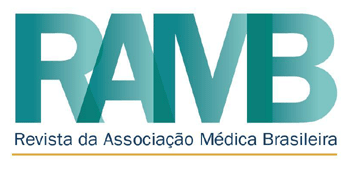As evidence accumulates of the disproportionate impact of COVID-19 on some ethnic minority groups, there is emergent evidence of the vulnerabilities of indigenous ethnic groups to COVID-19. On 1st April, the first COVID-19 case in Brasil’s 734,000 indigenous population was confirmed1 . She was an Indigenous Health Worker, 20 years old, of Kokama ethnicity, and from the Amazonas who had contact with a doctor diagnosed with COVID-192 . As of 25th June, the Ministry of Health reported 4769 COVID-19 cases and 128 deaths among Indigenous peoples. Brasil has 34 Indigenous Sanitary Districts (DSEIs) and 32 have reported positive cases ( Table 1 )3 . Globally, Brasil ranks second in infections and mortality and the country is embroiled in a political crisis over COVID-19 management4 . As with many indigenous populations worldwide, historic socio-environmental, governance, and access to health care issues make Brasil’s Indigenous populations disproportionately vulnerable to poor COVID outcomes. We report on current challenges for implementing COVID-19 response measures and early indigenous-led protection initiatives.
NUMBER OF INDIGENOUS TESTED FOR COVID-19 CONFIRMED, INFECTED, RECOVERED, AND DEATHS IN BRASIL.
The Brazilian Indigenous health subsystem districts, a branch of the National Health System, is located according to geographic, epidemiologic, and ethnographic factors which do not align with the geographic boundaries of the 26 states of Brasil. This creates challenges for the governance and resourcing of the Indigenous health subsystem. The subsystem is ill-prepared for pandemics with the absence of health teams in many villages, long distance to the nearest Polo Base (primary care health unit), shortage of beds for inpatients, and difficulties transporting patients to the nearest intensive care unit. These challenges are particularly problematic for communities that are far from urban centers. Living near to or in urban centers, however, carries a high risk of transmission from social vulnerability due to the lack of recognition of borders of indigenous territories and ineligibility for support from government programs for indigenous peoples who live outside of recognized territories5 , 6 . The implementation of containment measures to prevent transmission is complicated by the extensive invasion of indigenous lands by “ grileiros ” (land invaders) and miners who may be infected with the virus. For example, Yanomami Indigenous Lands are regularly invaded by prospectors, and one of the first few COVID-19 cases was a 15-year-old Yanomami from Aldeia Rehebe in Roraima7 . Ancestral and widespread cultural habits also create additional risks. For example, in the State of Mato Grosso do Sul a widely-spread habit among indigenous and non-indigenous people is to share an icy infusion of the herb Ilex paraguariensis in conversation circles using the same metal straw (‘ bomba ’). These rituals remain active despite campaigns against sharing personal items.
R$10.84 million (~£1.7 million) in emergency resources have been allocated for the protection of indigenous people against COVID-199 . This covers the implementation of containment measures by local health practitioners, emergency transfers of symptomatic cases from villages to the nearest city with specialized care units, including hospitals with ICUs, purchase of food and hygiene items, removal of invaders from villages, and culturally accessible information8 . Indigenous leaders, however, have reported delays in the receipt of these funds from Federal agencies. Several indigenous ethnic groups have created a support network to disseminate information in indigenous languages and have launched financial and food collection campaigns to guarantee basic items for the villages10 . Indigenous students at the State University of Mato Grosso do Sul have developed short videos that have been disseminated via the internet to the Indigenous communities (https://youtu.be/MTguI3bqluk)11 . Some communities (e.g. Tereré, Tremembé, Potiguara ) have created physical barriers that are manned by volunteers, and passersby are subject to symptom and temperature checks. Suspected cases are referred to the local primary health care facility. Crucially, there have been no new COVID cases in these villages since the barricades were created, thus demonstrating the importance and impact of bottom-up leadership among indigenous communities. The Group of Friends of Indigenous Peoples, a multi-regional group of 20 countries, emphasized that it is crucial that indigenous peoples participate in the design, implementation and evaluation of COVID-19 response strategies. With 305 tribes speaking 274 languages, over 100 isolated indigenous groups in the Amazon, and lack of adequate surveillance systems, participatory governance is essential for the effective and equitable implementation of COVID-19 response strategies in these fragile contexts12 .
REFERENCES
-
1 Brasil. IBGE. Disponível em https://www.ibge.gov.br/apps/populacao/ Acessado em 22 de maio de 2020.
» https://www.ibge.gov.br/apps/populacao/ -
2 Linha do tempo do Coronavírus no Brasil. Disponível em: https://www.sanarmed.com/linha-do-tempo-do-coronavirus-no-brasil Acessado em 22 de maio de 2020.
» https://www.sanarmed.com/linha-do-tempo-do-coronavirus-no-brasil -
3 COVID-19 e os Povos Indígenas. Plataforma de monitoramento da situação indígena na pandemia do novo coronavírus (Covid-19) no Brasil. Source: https://covid19.socioambiental.org/ Accessed on 5th June, 2020.
» https://covid19.socioambiental.org/ - 4 de Oliveira Andrade R. Covid-19: Brasil now has third highest number of cases behind US and Russia. BMJ. 2020;369:m2059. Published 2020 May 21. doi:10.1136/bmj.m2059
-
5 Indígenas no Brasil. Source https://brasilescola.uol.com.br/brasil/o-indigena-no-brasil.htm Acessed on May 21, 2020.
» https://brasilescola.uol.com.br/brasil/o-indigena-no-brasil.htm -
6 Covid-19 e indígenas: os desafios no combate ao novo coronavírus. Disponivel em https://www.uol.com.br/vivabem/noticias/redacao/2020/05/02/covid-19-e-indigenas-os-desafios-no-combate-ao-novo-coronavirus.htm?cmpid=copiaecola Acessed on May 22, 2020.
» https://www.uol.com.br/vivabem/noticias/redacao/2020/05/02/covid-19-e-indigenas-os-desafios-no-combate-ao-novo-coronavirus.htm?cmpid=copiaecola -
7 Povos Indígenas no Brasil. Política e Direito Socioambiental: Monitoramento de Áreas Protegidas. Disponível em: https://www.socioambiental.org/pt-br/noticias-socioambientais/se-coronavirus-entrar-nas-aldeias-e-possivel-que-aumento-de-casos-seja-explosivo-alerta-especialista Acessed on 03 June 3, 2020.
» https://www.socioambiental.org/pt-br/noticias-socioambientais/se-coronavirus-entrar-nas-aldeias-e-possivel-que-aumento-de-casos-seja-explosivo-alerta-especialista - 8 Brasil. Ministério da Saúde. Secretaria Especial de Saúde Indígena. Plano de Contingência Nacional para Infecção Humana pelo novo Coronavírus (COVID-19) em Povos Indígenas. Brasília. Março de 2020.
-
9 Brasil. Ministério da Justiça e Segurança Pública. Fundação Nacional do índio. Disponível em: http://www.funai.gov.br/index.php/comunicacao Acessed on June 3, 2020.
» http://www.funai.gov.br/index.php/comunicacao -
10 SIPAD. Superintendência de inclusão politicas afirmativas e diversidade. Disponível em: http://www.sipad.ufpr.br/portal/povos-indigenas-e-o-covid-19-acoes-diante-da-pandemia/ Acessed on June 3, 2020.
» http://www.sipad.ufpr.br/portal/povos-indigenas-e-o-covid-19-acoes-diante-da-pandemia/ - 11 Quadros, FA et al. Indigenous health study and research group. State University of Mato Grosso do Sul –UEMS, Brasil. 2020.
-
12 Group of friends of Indigenous peoples. https://www.un.org/development/desa/indigenouspeoples/wp-content/uploads/sites/19/2020/05/Statement-by-the-Group-of-Friends-of-Indigenous-Peoples.-COVID-19.pdf Accessed 6th June 2020
» https://www.un.org/development/desa/indigenouspeoples/wp-content/uploads/sites/19/2020/05/Statement-by-the-Group-of-Friends-of-Indigenous-Peoples.-COVID-19.pdf

 COVID-19 experience among Brasil’s indigenous people
COVID-19 experience among Brasil’s indigenous people
